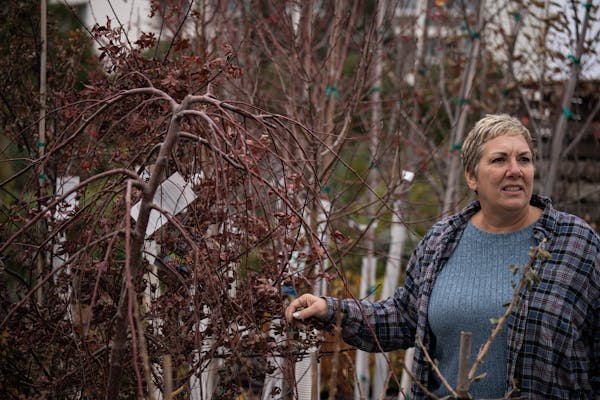As spring nears, many are wondering what we should or shouldn't grow now that the U.S. Department of Agriculture (USDA) has updated its plant zone hardiness map and moved parts of Minnesota from Zone 4 to 5.
Julie Weisenhorn, a University of Minnesota Extension horticulture educator, has fielded dozens of questions from gardeners since the announcement last fall. The bottom line is that gardeners — particularly in parts of the metro and southern Minnesota that have changed to the new hardy Zone 5 — can plant varieties in their zone or lower. So for those moving up to Zone 5, those gardeners will have a more extensive variety of planting options.
"It gives you a bigger [selection] of palettes to choose from," she said. "Those who have changed to Zone 5, according to the math, they have more plants that they can probably grow pretty well."
The USDA map, based on 30-year averages of an area's lowest temperatures, shows a major shift in much of the state. The metro area and much of the southern Minnesota border is now classified as 5a (average lowest temperature of minus-15 to minus-20), up from 4b (average lowst temperature of minus-20 to minus-25) in the previous map. Up north, Minnesota's lowest average temperatures (minus-35 to minus-40) previously spanned much of the state's border with Canada, but the new map now reduces that area to a few pockets near the Iron Range and International Falls.
Experiment, experiment, experiment
Even before this year's hardiness zone map changes, Weisenhorn said she was seeing Zone 5 plants, including certain varieties of lavender and raspberries, grow successfully in her garden.
At Bailey Nurseries, based in St. Paul, the staff is introducing plants such as a Zone 5 hydrangea called "Eclipse" that coincides with the USDA's new map, said Ryan McEnaney, marketing and communications manager.
"I think it gives us the permission to look, and opens the door to bringing in some of those plants that we didn't have before," he said of the new map's effect on the plant nursery.
He said it's a great time for home gardeners to shake things up by planting new items. "Play with things and see what works," McEnaney said.
A few other eye-catching Zone 5 hardiness plants he recommends are oakleaf hydrangea, which has big tufts of flowers and oak-like leaves, as well as autumn inferno cotoneaster, which has pinkish-white flowers that bloom in late spring to early summer.
"It's going to be a fun spring. If you have questions ask Master Gardeners, independent garden centers," he said. "We're here to help — companies like ours — we're paying attention to this."
Questions have been coming in at Bachman's, said Heather Johnson, horticulturalist at the Farmington location. She recommends gardeners check out the hardiness map on the USDA's website to see what zone they are in to better know what new plants might work in their area.
Johnson suggests that gardeners interested in adding more Zone 5 plants in their gardens consider varieties of lavender plants as well as foxgloves, which are easy to grow and have small colorful flowers cascading down their stems.
There are other things to keep in mind, too, when growing.
"The health of the plant is going to impact how it grows," she said. "Make sure to keep plants healthy and plant areas clean."
Not just zones that matter
A home's hardiness zone is just the first step to gardening, Weisenhorn said.
"It's important for people to first understand their site conditions that they have," she said. "What's the amount of light that they have? What's the soil like and how much space do they have?"
It's best to choose plants that can grow in the conditions of a yard. Doing that ensures that the plants will thrive, she said. For example, in places where there are asphalt buildings and hardscapes, it could create a different microclimate from an area just a few blocks away or even as close as the other side of the house.
"Maybe you have an area by a driveway that's protected by a [detached] garage. So you've got cement or asphalt and it's protected from wind and it's a south-facing location," she said. "It's going to be warm and if you're looking for a plant you're going to want to choose something that can tolerate heat and drought."
Weisenhorn said soil type and PH levels should also be taken into consideration. Last but not least, the best way for home gardeners to keep their plants thriving is to make sure they give the plant the proper care it requires.
"You can start with the hardiness zone when it comes to choosing plants, but there's so many other factors involved in plant selection," she said.
Orange crush: Boats packed with revelers tour Amsterdam canals to celebrate the king's birthday

